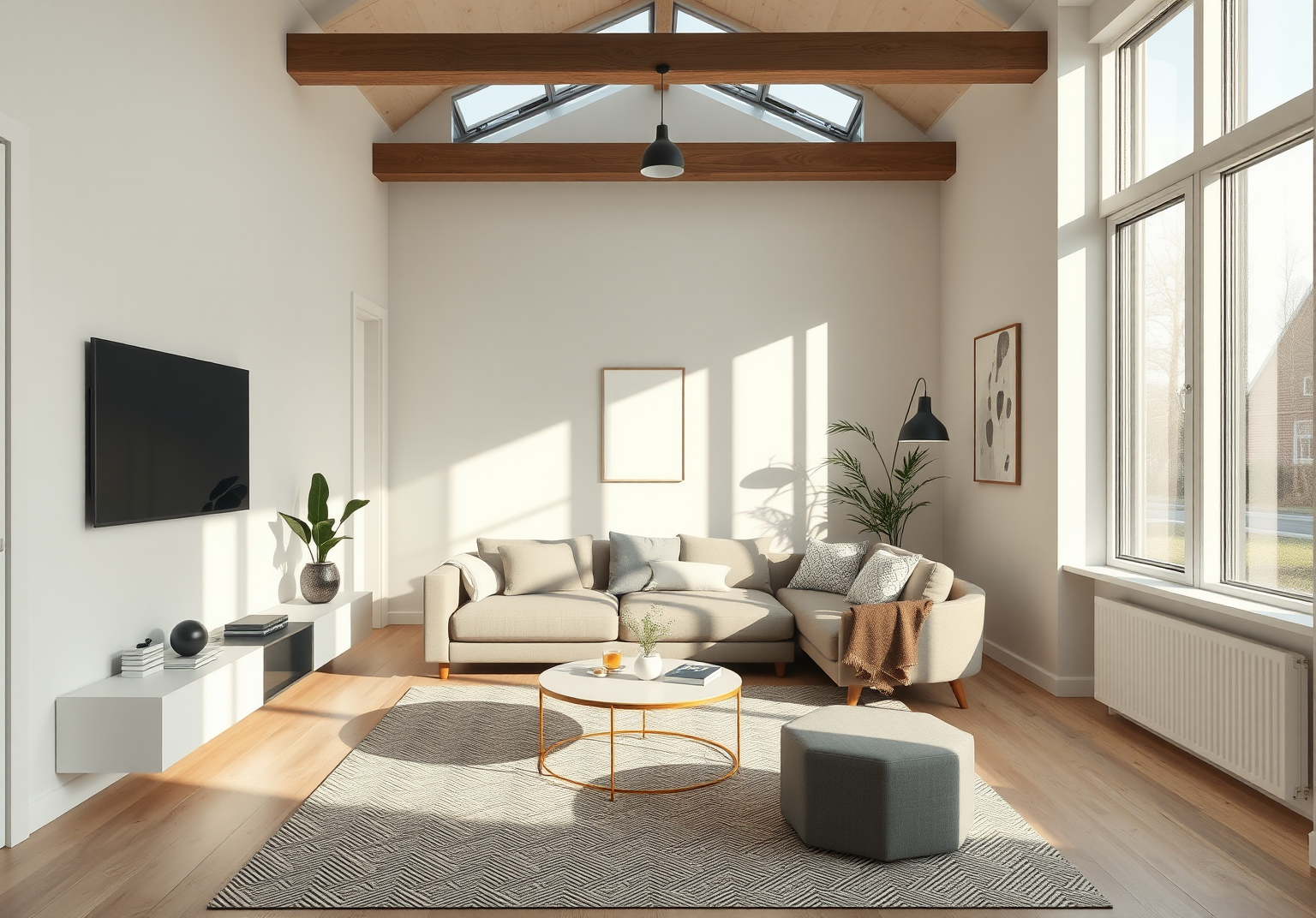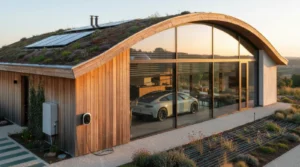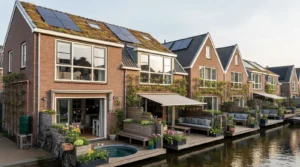Big Impact, Small Space: Home Renovation Tips That Work
Introduction
In the Netherlands, where space can be a luxury, renovating a small home requires careful planning and creative strategies. Whether you are looking to expand your living area, enhance the functionality of your space, or simply create a more inviting atmosphere, there are several key principles and tips that can help you achieve a big impact in even the smallest of spaces.
Basic Concepts
Before diving into the specifics of home renovation, it's important to understand some basic concepts that are crucial for maximizing space.
Minimalist Design
Minimalist design is not just an aesthetic choice; it's a lifestyle that emphasizes simplicity, functionality, and the removal of unnecessary clutter. This approach can turn cramped and cluttered spaces into open, inviting environments.
Compact Living
Compact living involves optimizing every square foot of your home. This can be achieved through smart storage solutions, multi-functional furniture, and a thoughtful use of space.
Open Concept Living
One of the most effective ways to make a small home feel larger is to adopt an open concept living design. This involves knocking down walls and creating a seamless flow between spaces.
<h3>Open Concept Living</h3>
<p>By removing walls and creating an open floor plan, you can enhance natural light penetration and encourage a sense of connectivity and openness. This doesn’t mean you have to opt for an entirely open floor plan; even widening doorways or removing a few walls can make a significant difference[5>.</p>
Creating Distinct Zones
While an open concept can make your home feel larger, it's also important to create distinct zones within your space. This can be achieved through various design elements.
<h3>Creating Distinct Zones</h3>
<p>Use varied flooring materials, area rugs, or distinct but cohesive décor to create visual separation for each zone. For example, if you remove walls between the kitchen and dining area, maintain the character of each room by using subtle distinctions like half walls or open bookcases[4).</p>
Smart Storage Solutions
Smart storage is essential for maximizing space in small homes.
<h3>Smart Storage Solutions</h3>
<p>Invest in storage containers that precisely fit both the items they house and the area in which they are housed. Consider custom carpentry solutions like beds and desks that fold down from the wall, floor-to-ceiling cabinetry, and hidden storage in furniture pieces like ottomans and coffee tables[5).</p>
Multi-Functional Furniture
Multi-functional furniture is a game-changer for small spaces.
<h3>Multi-Functional Furniture</h3>
<p>Choose items like sofa beds, foldable tables, and wall-mounted desks that can serve multiple purposes without taking up unnecessary room. This way, you can have a living room that transforms into a bedroom or a dining area that becomes a workspace[5).</p>
Neutral Color Palette
A neutral color palette can make spaces feel more expansive.
<h3>Neutral Color Palette</h3>
<p>Use whites, grays, and muted tones to create a serene atmosphere. These colors reflect light and make spaces feel larger. Avoid bold colors and patterns that can make a room feel cluttered and smaller[5).</p>
Maximizing Natural Light
Natural light can significantly enhance the ambiance of a small space.
<h3>Maximizing Natural Light</h3>
<p>Opt for pale colors that reflect light, and design your home to introduce more outdoor light through windows, glass doors, and solar tubes. Strategically place mirrors to bounce light from your window into other areas of the room[5).</p>
Utilizing Vertical Space
In small homes, it's crucial to think up instead of out.
<h3>Utilizing Vertical Space</h3>
<p>Consider floor-to-ceiling cabinetry, beds and desks that fold down from the wall, and shelves built into walls. These solutions maximize floor and wall space, making your home feel more spacious[4).</p>
Incorporating Smart Technology
Smart technology can enhance convenience and efficiency in small spaces.
<h3>Incorporating Smart Technology</h3>
<p>Incorporate smart thermostats, lighting systems, and security features to minimize the need for additional devices. This contributes to a sleek, minimalist aesthetic and enhances the overall functionality of your home[3).</p>
Customizable Furniture Configurations
Invest in customizable furniture that can adapt to various configurations.
<h3>Customizable Furniture Configurations</h3>
<p>Customizable furniture allows you to optimize space and gives you the flexibility to refresh the layout of your living space periodically. This ensures a long-lasting and adaptable design[3).</p>
Artistic and Functional Lighting
Lighting fixtures can serve as both functional and artistic elements.
<h3>Artistic and Functional Lighting</h3>
<p>Select lighting fixtures that not only illuminate your space but also serve as artistic focal points. Pendant lights, wall sconces, and floor lamps with minimalist designs add a touch of sophistication while fulfilling their functional purpose[3).</p>
Declutter and Organize
Before starting any renovation, declutter and organize your belongings.
<h3>Declutter and Organize</h3>
<p>Minimalism is about quality over quantity. Be selective about the items you choose to keep. Consider donating, selling, or storing items that don’t align with the minimalist ethos. A clutter-free environment streamlines the renovation process and makes your space feel more spacious[3).</p>
Sustainable Minimalism
Extend your minimalist approach by incorporating sustainable practices.
<h3>Sustainable Minimalism</h3>
<p>Choose eco-friendly materials, energy-efficient appliances, and consider upcycling or repurposing existing furniture. This aligns with the minimalist ethos and contributes to a healthier and more environmentally conscious lifestyle[3).</p>
Practical Tips for Dutch Residents
For those living in the Netherlands, here are some practical tips to keep in mind:
Plan Carefully
- Ensure that your renovation plans comply with local building regulations and zoning laws.
- Consult with local architects or designers who are familiar with Dutch building standards.
Choose Local Materials
- Opt for materials that are readily available in the Netherlands to reduce transportation costs and environmental impact.
- Consider using sustainable materials that are popular in Dutch construction, such as wood and recycled materials.
Consider Climate
- The Netherlands has a temperate maritime climate with cool winters and mild summers. Choose materials and designs that are resilient to these conditions.
- Ensure good insulation to maintain energy efficiency and comfort.
Conclusion
Renovating a small home in the Netherlands requires a thoughtful and strategic approach. By adopting minimalist design principles, utilizing smart storage solutions, and maximizing natural light, you can create a spacious and inviting living environment even in the most compact of spaces. Remember, the key to successful small space renovation is to be intentional about every design choice, ensuring that each element contributes to the overall sense of openness and tranquility.
<h2>Conclusion</h2>
<p>Embarking on a home renovation journey in the Netherlands is not just about aesthetics; it’s a conscious choice to simplify and enhance your lifestyle. By leveraging these creative ideas and practical tips, you can transform your small living space into a haven of functionality, comfort, and style. As you embark on your renovation adventure, remember that less is often more, and simplicity is the ultimate sophistication.</p>








